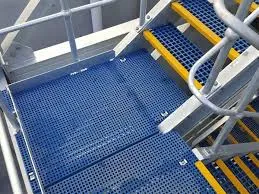
-
 Afrikaans
Afrikaans -
 Albanian
Albanian -
 Amharic
Amharic -
 Arabic
Arabic -
 Armenian
Armenian -
 Azerbaijani
Azerbaijani -
 Basque
Basque -
 Belarusian
Belarusian -
 Bengali
Bengali -
 Bosnian
Bosnian -
 Bulgarian
Bulgarian -
 Catalan
Catalan -
 Cebuano
Cebuano -
 China
China -
 China (Taiwan)
China (Taiwan) -
 Corsican
Corsican -
 Croatian
Croatian -
 Czech
Czech -
 Danish
Danish -
 Dutch
Dutch -
 English
English -
 Esperanto
Esperanto -
 Estonian
Estonian -
 Finnish
Finnish -
 French
French -
 Frisian
Frisian -
 Galician
Galician -
 Georgian
Georgian -
 German
German -
 Greek
Greek -
 Gujarati
Gujarati -
 Haitian Creole
Haitian Creole -
 hausa
hausa -
 hawaiian
hawaiian -
 Hebrew
Hebrew -
 Hindi
Hindi -
 Miao
Miao -
 Hungarian
Hungarian -
 Icelandic
Icelandic -
 igbo
igbo -
 Indonesian
Indonesian -
 irish
irish -
 Italian
Italian -
 Japanese
Japanese -
 Javanese
Javanese -
 Kannada
Kannada -
 kazakh
kazakh -
 Khmer
Khmer -
 Rwandese
Rwandese -
 Korean
Korean -
 Kurdish
Kurdish -
 Kyrgyz
Kyrgyz -
 Lao
Lao -
 Latin
Latin -
 Latvian
Latvian -
 Lithuanian
Lithuanian -
 Luxembourgish
Luxembourgish -
 Macedonian
Macedonian -
 Malgashi
Malgashi -
 Malay
Malay -
 Malayalam
Malayalam -
 Maltese
Maltese -
 Maori
Maori -
 Marathi
Marathi -
 Mongolian
Mongolian -
 Myanmar
Myanmar -
 Nepali
Nepali -
 Norwegian
Norwegian -
 Norwegian
Norwegian -
 Occitan
Occitan -
 Pashto
Pashto -
 Persian
Persian -
 Polish
Polish -
 Portuguese
Portuguese -
 Punjabi
Punjabi -
 Romanian
Romanian -
 Russian
Russian -
 Samoan
Samoan -
 Scottish Gaelic
Scottish Gaelic -
 Serbian
Serbian -
 Sesotho
Sesotho -
 Shona
Shona -
 Sindhi
Sindhi -
 Sinhala
Sinhala -
 Slovak
Slovak -
 Slovenian
Slovenian -
 Somali
Somali -
 Spanish
Spanish -
 Sundanese
Sundanese -
 Swahili
Swahili -
 Swedish
Swedish -
 Tagalog
Tagalog -
 Tajik
Tajik -
 Tamil
Tamil -
 Tatar
Tatar -
 Telugu
Telugu -
 Thai
Thai -
 Turkish
Turkish -
 Turkmen
Turkmen -
 Ukrainian
Ukrainian -
 Urdu
Urdu -
 Uighur
Uighur -
 Uzbek
Uzbek -
 Vietnamese
Vietnamese -
 Welsh
Welsh -
 Bantu
Bantu -
 Yiddish
Yiddish -
 Yoruba
Yoruba -
 Zulu
Zulu
frp sump cover
The Importance of FRP Sump Covers in Modern Industrial Applications
In various industrial environments, effective drainage systems are critical for maintaining operations and ensuring safety. One essential component of these systems is the sump cover. Among the materials used for sump covers, Fiber Reinforced Plastic (FRP) has emerged as a popular choice due to its numerous advantages. This article explores the significance of FRP sump covers, highlighting their benefits, applications, and maintenance considerations.
What is FRP?
Fiber Reinforced Plastic, or FRP, is a composite material made from a polymer matrix reinforced with fibers, typically glass or carbon. This combination results in a lightweight yet incredibly strong material that can withstand harsh environmental conditions. Its unique properties make FRP an excellent choice for various industrial applications, particularly in the manufacturing of sump covers.
Advantages of FRP Sump Covers
1. Durability FRP sump covers are resistant to corrosion, chemicals, and abrasion. This resistance is essential in environments where aggressive substances are present, such as in chemical plants or wastewater treatment facilities. Unlike traditional materials such as metal or concrete, FRP does not rust or degrade over time, ensuring a longer lifespan.
2. Lightweight Weighing significantly less than concrete or metal counterparts, FRP sump covers are easier to handle and install. This lightweight nature reduces labor costs and can contribute to lower overall project expenses.
3. Customizability FRP can be manufactured in various shapes, sizes, and colors, allowing for a high degree of customization to meet specific project requirements. This flexibility is particularly beneficial in complex industrial designs where standard sizes may not fit.
4. Safety The slip-resistant surface of FRP sump covers enhances safety in industrial environments. Additionally, they are designed to bear heavy loads without cracking, further minimizing the risk of accidents caused by structural failures.
frp sump cover

5. UV Resistance In outdoor applications, exposure to sunlight can degrade many materials. However, FRP is engineered to resist UV radiation, ensuring that it maintains its structural integrity and aesthetic appeal even when exposed to prolonged sunlight.
Applications of FRP Sump Covers
FRP sump covers find utility across various industries, including
- Chemical Processing Their chemical resistance makes them ideal for facilities that handle hazardous materials. - Wastewater Treatment In these settings, FRP covers provide protection against corrosive environments and prevent contamination. - Manufacturing They are commonly used in factories to manage effluent and maintain cleanliness. - Marine Applications Due to their corrosion resistance to saltwater, FRP sump covers are increasingly used in coastal industrial facilities.
Maintenance Considerations
While FRP sump covers require minimal maintenance due to their durability, periodic inspections are advisable to check for any signs of wear or damage. Cleaning should involve non-abrasive methods to maintain their protective coatings and appearance. Additionally, any installations should adhere to the manufacturer’s specifications to ensure optimal performance.
Conclusion
In summary, FRP sump covers represent a significant advancement in industrial drainage solutions. Their durability, lightweight nature, safety features, and customization options make them a superior choice for a variety of applications. As industries continue to prioritize efficiency and safety, the adoption of FRP sump covers is likely to increase, solidifying their role as a cornerstone in modern industrial infrastructure.
Latest news
-
Exploring the Benefits of Top Hammer Drifter Rods for Enhanced Drilling PerformanceNewsJun.10,2025
-
High-Precision Fiberglass Winding Machine for GRP/FRP Pipe Production – Reliable & Efficient SolutionsNewsJun.10,2025
-
FRP Pipes & Fittings for Shipbuilding - Corrosion-Resistant & LightweightNewsJun.09,2025
-
Premium FRP Flooring Solutions Durable & Slip-ResistantNewsJun.09,2025
-
Premium Fiberglass Rectangular Tanks Durable & Lightweight SolutionNewsJun.09,2025
-
Tapered Drill String Design Guide Durable Performance & UsesNewsJun.09,2025









